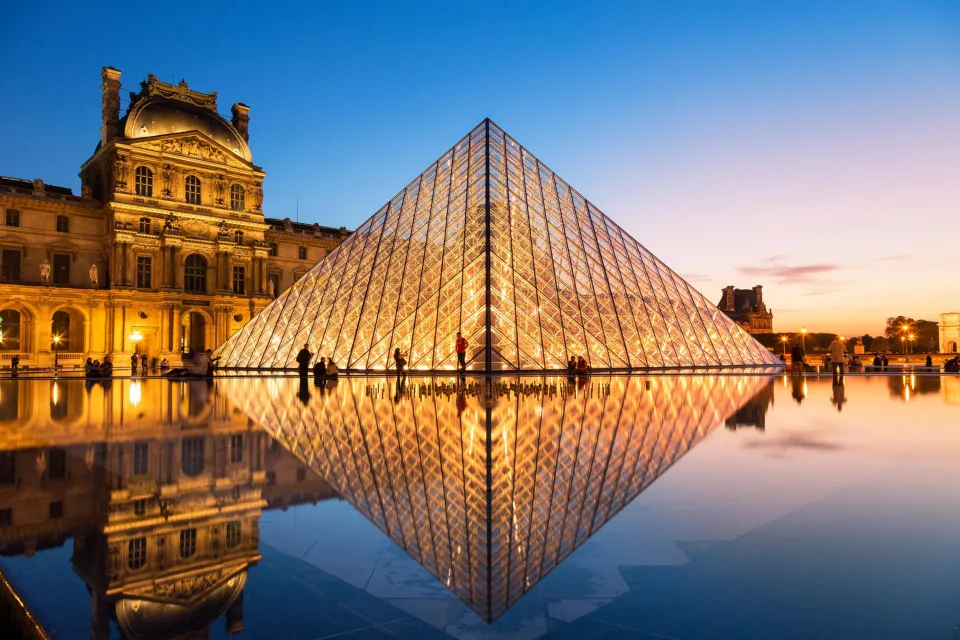The pronunciation of the Louvre is something every Paris dreamer has wondered about. If you’ve ever imagined visiting France’s capital, you’ve likely pictured yourself standing before the stunning glass pyramid of the Louvre Museum. You can almost hear the buzz of the crowd, the faint notes of street musicians, and feel the excitement of that moment when you finally see the Mona Lisa with your own eyes.
But there’s one small thing that trips up millions of travelers — how do you actually pronunciation of the Louvre”?
You might have heard it said in different ways: “Loo-ver,” “Lohv-ray,” or “Loov-ruh.” The truth is, the correct pronunciation of the Louvre is simpler than it seems — and saying it right is part of embracing the elegance and history of France itself.
What Is the Louvre?
Before diving into pronunciation, let’s appreciate what the Louvre really represents.
The Louvre Museum (Musée du Louvre in French) is the largest art museum in the world, located in the heart of Paris, along the River Seine. Originally built as a fortress in the 12th century, it later became a royal palace — home to French kings for centuries before transforming into a museum during the French Revolution in 1793.
Today, the Louvre holds over 35,000 works of art, including masterpieces like:
- The Mona Lisa by Leonardo da Vinci
- Venus de Milo
- Winged Victory of Samothrace
- Liberty Leading the People by Eugène Delacroix
It’s not just a museum — it’s a symbol of global culture and artistic freedom, visited by nearly 10 million people every year.
The Correct Pronunciation of the Louvre
Here’s the key:
✅ Correct pronunciation (English): LOOV-ruh or LOOV-rah
✅ French pronunciation: Loo-vrh (soft, rolling “r”)
❌ Incorrect versions: LOO-ver, Loo-vray, or Loh-ver
In phonetic form (IPA): /ˈluːvrə/
Quick Trick:
Say “move” — now replace the “m” with an “l” → loove.
Then softly add “ruh” at the end → Loov-ruh.
That’s it! You’ve got it right like a Parisian.
Why Is “Louvre” So Hard to Pronounce?
The challenge comes from French spelling rules, which differ from English.
In French:
- The “ou” makes an “oo” sound (like in food).
- The “re” ending isn’t pronounced “ree” or “ray,” but rather a light “ruh.”
- French also blends syllables smoothly — you don’t stress each letter like English.
That’s why Louvre sounds elegant and fluid rather than sharp or choppy.
When you say “Louvre” correctly, you’re not just speaking — you’re echoing the musical rhythm of the French language itself.
A Word with Royal History
The word “Louvre” comes from the Old French “lupara,” which means “fortress” or “stronghold.” That’s fitting — the Louvre was originally a medieval fortress built by King Philip II in the late 1100s to protect Paris.
Over centuries, it transformed from a symbol of royal power into a temple of art for the people — a journey that mirrors France’s own story of revolution and rebirth.
So when you pronounce “Louvre,” you’re not just saying the name of a museum. You’re speaking a word that has stood for centuries of French pride, resilience, and creativity.
Why Pronunciation Of The Louvre Matters When Traveling
You might wonder — does it really matter if you say “Loo-ver” instead of “Loov-ruh”?
Yes — and here’s why.
Correct pronunciation isn’t about perfection; it’s about respect and connection.
When you make the effort to pronounce local words correctly:
- Locals are more likely to smile and help you.
- You show appreciation for the culture.
- You feel more confident and immersed in your travel experience.
In Paris, a simple word said correctly can open doors — literally. Whether you’re asking for directions, ordering a ticket, or chatting with a guide, the way you say “Louvre” shows that you care enough to learn.
Other French Landmarks People Mispronounce
The pronunciation of the Louvre isn’t the only tricky one for travelers.
Here are some other French landmarks that often confuse visitors:
| Landmark | Correct Pronunciation | Common Mistake |
| Champs-Élysées | Shawn-zay-lee-zay | Champs El-eye-sees |
| Notre-Dame | No-truh Dahm | No-ter Daym |
| Versailles | Ver-sigh | Ver-sails |
| Montmartre | Mon-mar-truh | Mont-mart |
| Seine River | Sen | Sayn |
Mastering these adds charm to your Paris adventures — and helps you sound like you belong there.
Simple Tips to Practice French Pronunciation
If French pronunciation feels intimidating, start small. These easy techniques will help:
- Listen and repeat: Use YouTube or Google Translate’s audio feature for “Louvre.”
- Slow it down: Break it into two sounds — “Loov” + “ruh.”
- Mimic native speakers: Watch French movies or travel vlogs.
- Use pronunciation apps: Try Forvo, Duolingo, or Speechling.
- Record yourself: Compare your version to the French one — small improvements go a long way.
Over time, your ear adjusts, and your tongue learns the rhythm of the language naturally.
The Louvre as a Global Icon
Beyond its pronunciation of the Louvre Museum is one of the most powerful cultural symbols on Earth. It bridges art, history, and identity — drawing people from every country.
Its glass pyramid entrance, designed by architect I.M. Pei, represents the union of ancient tradition and modern innovation — much like how language connects the past and present.
Every visitor, whether they say “Loov-ruh” perfectly or not, adds to the museum’s living story. But learning to say it correctly makes that experience even more meaningful.
Final Thoughts: Say It with Confidence
When you next step into Paris, stand proudly before that pyramid and say:
👉 “LOOV-ruh.”
It’s a small word with big history — a bridge between languages, cultures, and centuries of art.
Getting it right isn’t just about pronunciation of the louvre — it’s about connection, curiosity, and respect for a world that welcomes you when you try to speak its language.




